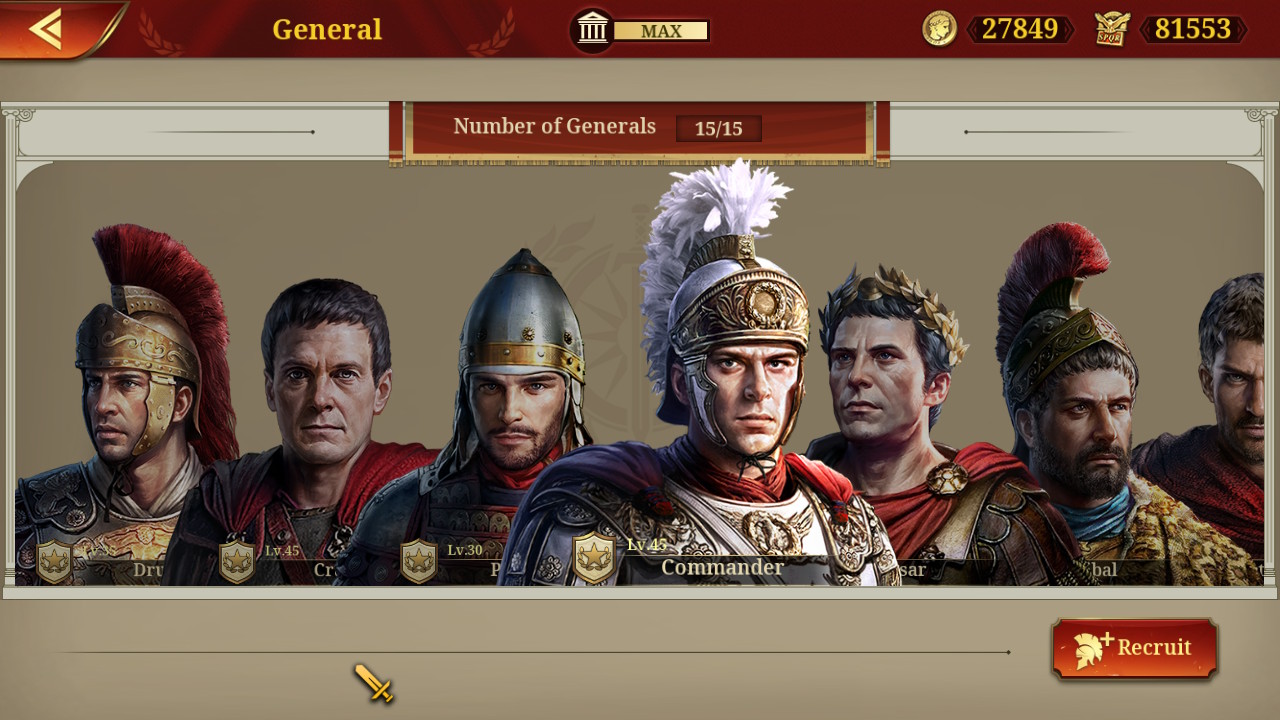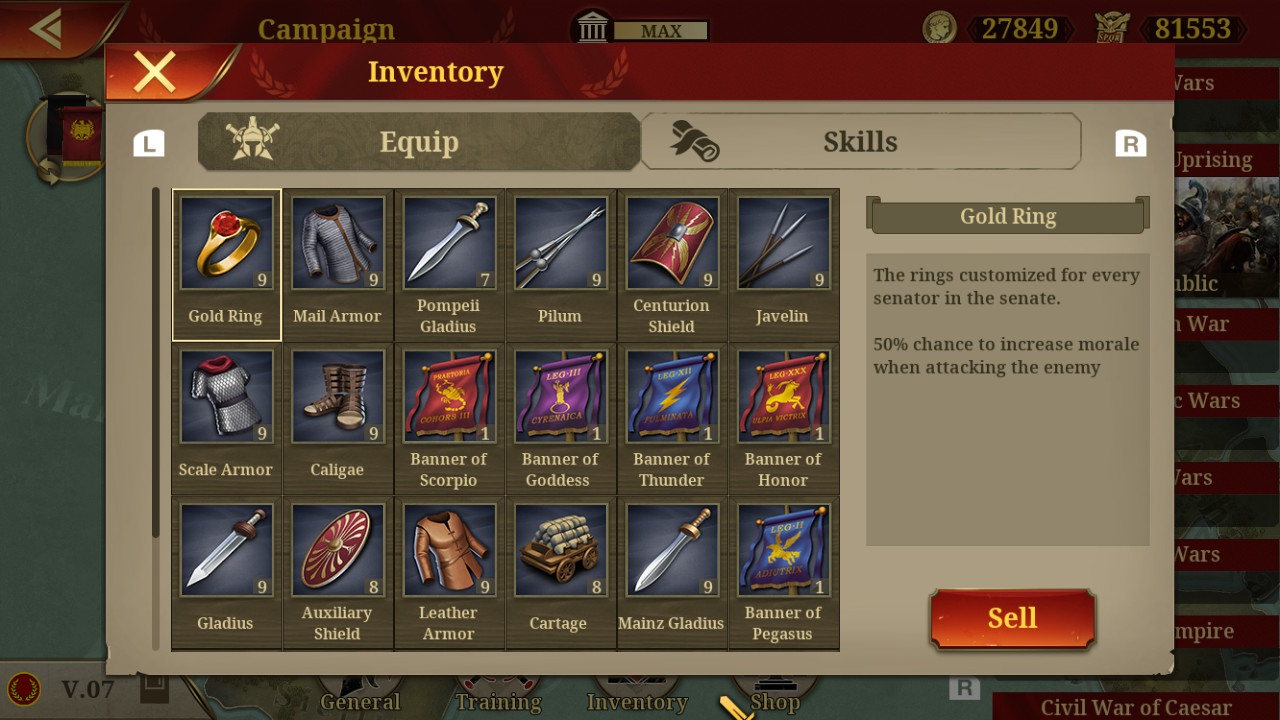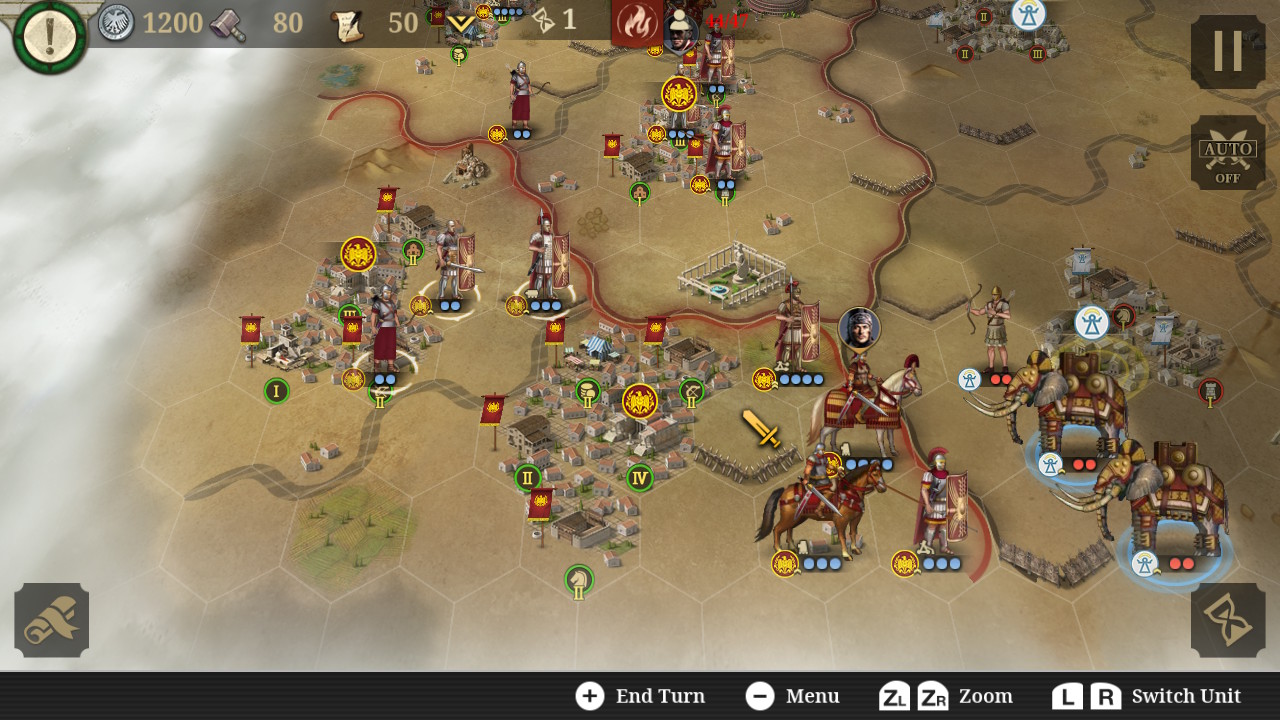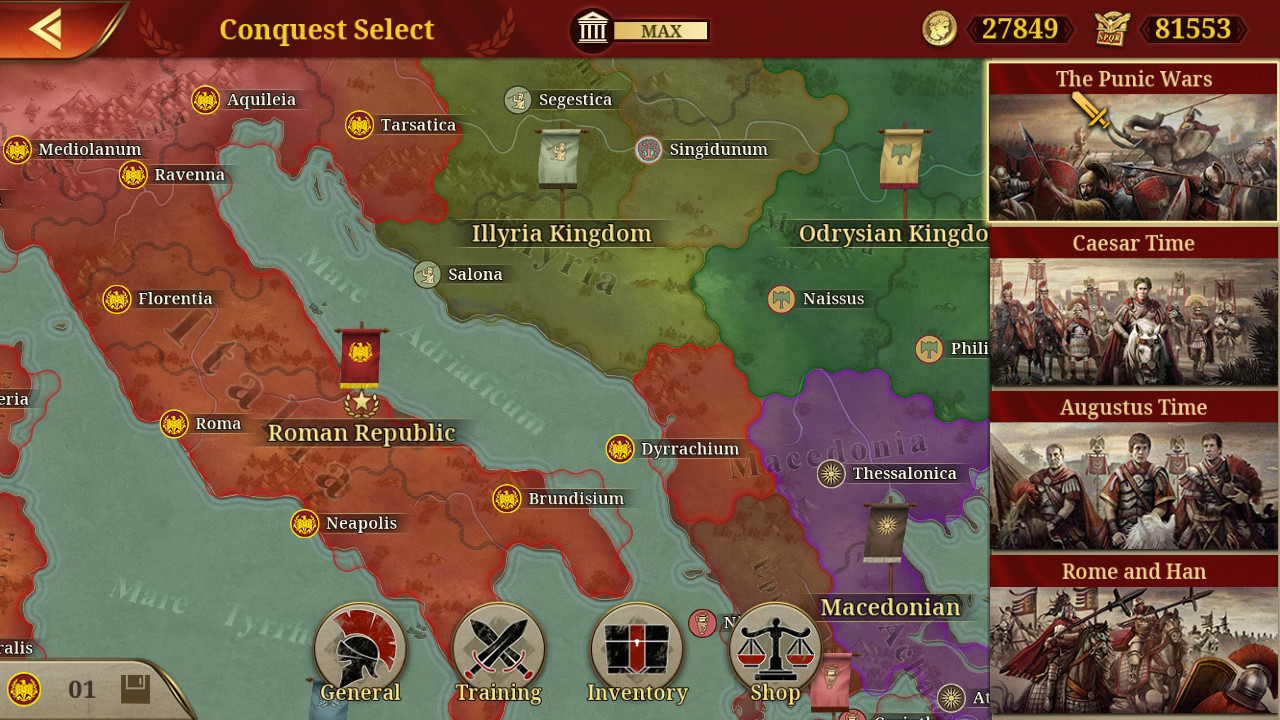All roads lead to this game.
Julius Caesar once said “Veni Vidi Vici” (I came, I saw, I conquered). When I’m gaming, it’s more like “Veni Vidi Munchi™” (I came, I saw, I snacked). You can do a little “Munchi” while playing Great Conqueror Rome, which is a plus.
This game puts you in charge of the legendary Roman legion. You don’t get to command all of them at once—where would be the fun in that? With Great Conqueror: Rome, you get to command small groups on a hex board. The layout is reminiscent of the old strategy board games, but you get much better animations. When your units do battle, you get a mini scene to illustrate battle elements like unit type and unit strength and how it stacks up against your enemy. There are plenty of other features, so let’s check them out.
Great Conqueror: Rome provides a lot of value in gaming time, elements to control, and campaigns to fight. You also get some real history; enough to be interesting and support the game, but not so much that it turns into a history class. As you progress through different, historical battles, you advance in rank and unlock additional generals. The generals are also real figures, so history buffs will be pleased.
One thing which might be irksome to the history nerds is that you can assign a general to an army he never led. You can actually go so far as to put a general in charge of forces which would have been his enemies a couple thousand years ago. Personally, I think this makes for some interesting possibilities.
Not only do you get to assign generals, you also get to recruit new troops. Don’t be fooled; overseeing the army of Rome is no walk in the park. You will need to manage your troops, recruit new troops, build new structures when you capture new territory (or tear some old buildings down), win battles, and so on. There is a lot to do, but this adds to the game time. Besides, the elements you have to track are not so convoluted that they make the game more complicated than fun. On the flip side, Great Conqueror: Rome could do a bit better with the tutorials—maybe taking things one task type at a time so the player can get really familiar with it before throwing the other dozen things at you.
As you progress, you can earn coins to use for training your troops, building structures, etc., so the game keeps things on a pace. This prevents your army from getting too powerful too quickly.
The types of troops you command range from foot soldiers to archers to cavalry. After some advancement, you even get some ships to sail on the Mediterranean, just in case you were looking for a game where you can get seasick. You can build fences and other obstacles to slow the enemy down, you can have your troops burn down parts of enemy towns, and so on.
As noted above, the field of combat is laid out in a hex grid. Things get a little touchy here. The left Joy-Con controls the cursor for making selections. Unless you have a very delicate touch on the Joy-Con, the cursor moves a bit too fast for controlled selection. You can use the buttons on the left of the controller to move more slowly, but this is a bit awkward.
Some other drawbacks include a lack of real politics; the path is set and there is no way to really influence the outcome (you will fight the battles laid out for you). This isn’t all bad, it just limits the game a bit. It could also be argued that the battled sequences are a bit repetitive. The game does manage to steer clear of being just a click manager, but you do go through the same set of steps a lot. One pet peeve I developed—when being introduced to a general or being given tips between screens, the game does not always pause long enough to read the message on the screen. This could really use a button press to give the player time to assimilate the information.
On the upside, you get plenty of gameplay with this one. The history is mostly accurate and the graphics are good. It comes close to a 2D storybook appearance, but the artwork is actually pretty decent.
There could be some additional differentiation between your units and enemy units (the big tell here is blue health dots for you, red dots for the enemy). You get game content in campaign, conquest, and expedition modes, so you have all sorts of ways to test your skills. The area maps are all linked (it is based on real geography, after all) so there is good continuity.
And besides, Aquaman should be happy seeing his boy Scipio get some screen time.
Review: Great Conquerer: Rome (Nintendo Switch)
Good
Great Conquerer: Rome may not be the best tactical sim out there, but it’s a solid game that’s fun to play. It offers plenty of tasks to perform, places to see, enemies to kill, and territories to conquer, placing its strategy gaming value well above the asking price.






